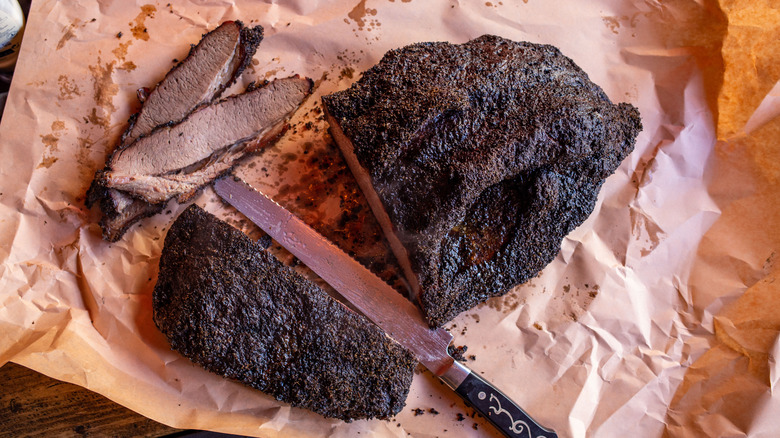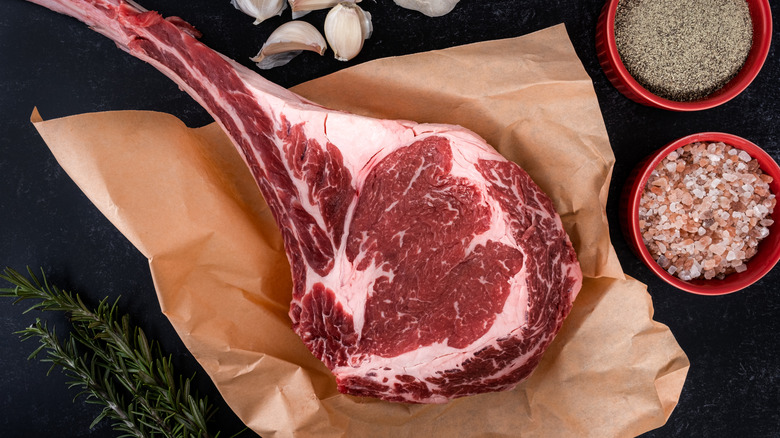Why It Pays To Wrap Meat In Peach Treated Butcher Paper
There is something very reassuringly old school about butcher paper. Butchery itself is an art that has been practiced since humans first started consuming meat. Our modern image of the butcher shop, with its hanging sausages and refrigerated displays of glorious cuts of meat, came about in the 20th century, as did the concept of butchery being a skill that requires years of training (via Wayside Market). All of this reinforces the notion of security you feel when holding a freshly butchered piece of meat that has been wrapped in butcher paper. It holds a much weightier significance than, say, carrying soggy, cling film wrapped meat home from the grocery store.
But what exactly is butcher paper? According to Webstaurant Store, butcher paper is a specialty product designed to protect raw meat and fish from airborne contaminants. There are several different types of butcher paper, which are broken up into categories based on color and the treatment of the paper. The most basic is white butcher paper, which is what you'll find most delicatessen sandwiches wrapped in. At the top is a premium paper treated with Gardenia, which prevents juice leaks but is also breathable.
As for peach treated butcher paper, that hits the sweet spot in terms of utility and function. And yes, the color is indicative of the fruit.
Preserving freshness and keeping out moisture
Peach treated butcher paper, according to MasterClass, bears a close resemblance to pink butcher paper, which is also called peach paper. The two are not to be confused with one another, however. The main difference lies in their use: Pink paper is heavily favored among pitmasters for use with smoked meats, but it is missing one noticeable component that differentiates it from its cousin. Peach treated butcher paper is treated with a sizing agent that simultaneously keeps meat fresh and promotes water-resistance, which means that it keeps unwanted moisture from coming into contact with the meat.
There is another component to the peach treated butcher paper, which is that of breathability. It shares this commonality with pink paper. Breathability is particularly useful when barbecuing, as St. Louis BBQ Store explains. In place of tin foil, peach treated butcher paper will allow the barbecued meat to breathe, which creates a better bark and, ironically enough, preserves the moisture locked inside the cut.
Peach treated paper is also aesthetically pleasing due to its peach flesh color, which allows the paper to better hide unappetizing juices and stains that would otherwise appear on white butcher paper or clear plastic wrapping.

